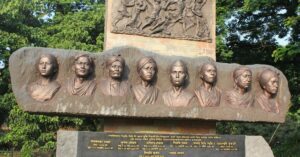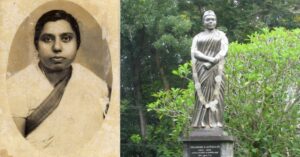Becoming a Fakir: How Madurai Inspired Mahatma Gandhi’s Iconic Loincloth Attire
He may have been mocked as a 'half-naked seditious fakir', but his iconic makeover went on to become the quintessential symbol of the common man and his spiritual strength.
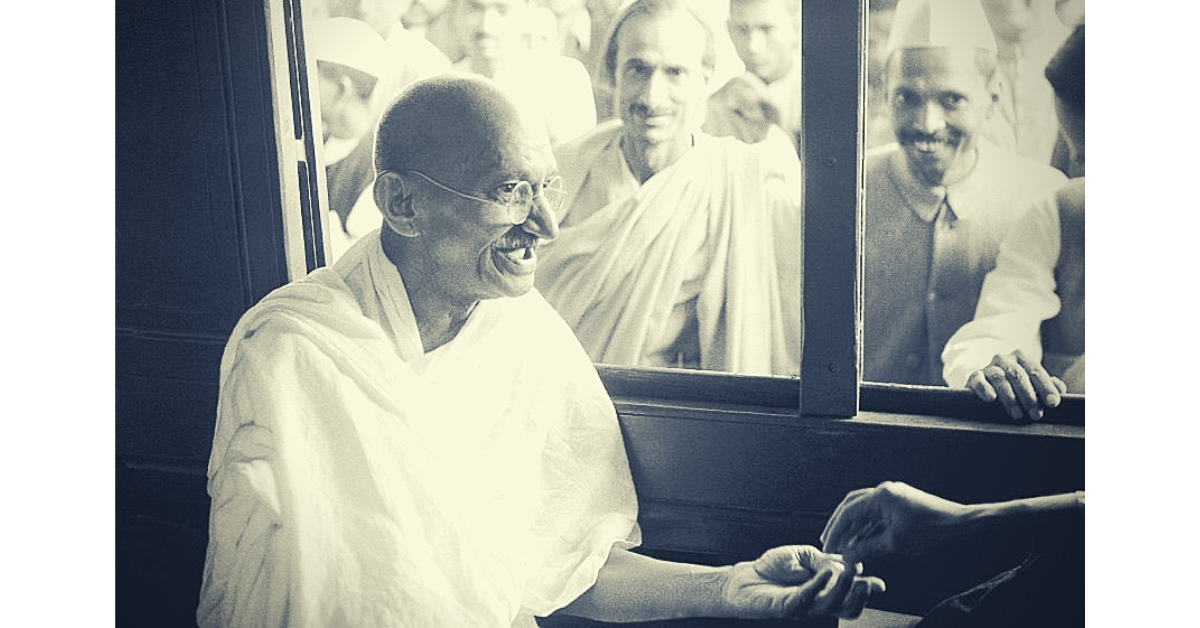
“All the alterations I have made in my course of life have been affected by momentous occasions, and they have been made after such a deep deliberation that I have hardly had to regret them.”
-Mahatma Gandhi.
Nearly 88 years ago, Winston Churchill was overwhelmed to see Mahatma Gandhi’s attire. In a moment of anger, he called Gandhi, a ‘half-naked seditious fakir’!
“It is alarming and also nauseating to see Mr Gandhi, an Inner Temple lawyer, now become a seditious fakir of a type well known in the East, striding half-naked up the steps of the Viceregal Palace, while he is still organizing and conducting a defiant campaign of civil disobedience, to parley on equal terms with the representative of the King-Emperor.”
His humble clothing was in non-violent defiance of the British Rule–a message that he wore on himself for the rest of his life. Yet, the choice of clothing has a deeper story set in the ancient city of Madurai, Tamil Nadu.
It was only ten years before this encounter that Gandhi came closer to becoming a “fakir” as he shed the physical remnants of colonialism off his body–his hat and shirt.
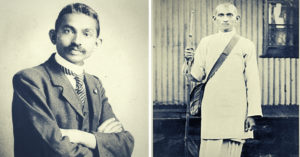
‘Fakir’ is a term derived from the Arabic word ‘faqr’ which means poverty and depicts a person who has renounced his worldly possessions for a humble, spiritual life. Mahatma Gandhi’s life also took such a turn during his South India tour in September 1921.
While crusading for the civil disobedience movement by boycotting British goods and promoting Khadi, he was suddenly hit with a practical reality when someone asked- “If the labourers burn their foreign clothing, where are they to get khadi from?”
The plea of the poor had then overpowered him. He wrote in the weekly publication, Navajivan, on October 2, 1921.
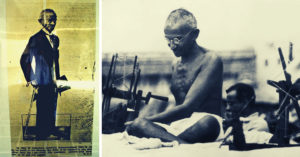
He wrote, “On the way (from Madras – now Chennai – to Madurai by train) I saw in our compartment crowds that were wholly unconcerned with what had happened. Almost without exception, they were bedecked in foreign fineries. I entered into conversation with some of them and pleaded for Khadi. They shook their heads as they said, ‘We are too poor to buy Khadi and it is so dear.’ I realised the substratum of truth behind the remark. I had my vest, cap and full dhoti on. When these uttered only partial truth, the millions of compulsorily naked men, save for their langoti four inches wide and nearly as many feet long, gave through their limbs the naked truth. What effective answer could I give them, if it was not to divest myself of every inch of clothing I decently could and thus to a still greater extent bring myself in line with ill-clad masses? And this I did the very next morning after the Madura meeting.”
This doubt, finally translated into concrete action, after a few days when he reached Madurai to stay at Sri Ramji Kalyanji’s residence on 175-A, West Masi Street.
He arrived in silence, with a cloud of doubt about his head, the silent indication of the storm of revolution awaiting the nation.
On September 22, 1921, he had abandoned his usual attire of a shirt and hat, donning just a simple white loincloth.
Explaining the situation, Director of the National Gandhi Museum in New Delhi, A Annamalai, explained to The New Indian Express, “There were two issues worrying Gandhiji. He had been struck by the poverty he had seen around him as far back as during the Champaran satyagraha days. But this visit to South India made it all the more starker to him. The sight of poor peasants working in the fields in their loin clothes and their struggle for food and livelihood troubled him.”
Also Read: When Gandhiji Collected Rs 28 Lakhs for Kerala: Remembering the ‘Great Flood of 99’
This building where Gandhi decided to embrace loincloth, is soon to become a heritage site.
“The production of khadi was at the beginning stage, and the Mahatma wanted to set an example and reduce the need for producing more khadi by making people go in for more simpler clothing. On September 22, he made his decision and decided to abandon wearing the shirt and cap forever,” Annamalai added.
This act, not only highlighted and strengthened the fight to boycott British goods but also created the everlasting symbol of a common man and his spiritual strength, reaching out to the hearts of fellow Indians.

“I do not want either my co-workers or readers to adopt the loincloth. But I do wish that they should thoroughly realise the meaning of the boycott of foreign cloth and put forth their best effort to get it boycotted, and to get khadi manufactured. I do wish that they may understand that swadeshi means everything,” Gandhi wrote in clarification, in Navajivan.
“The adoption of a dhoti and a shawl in the place of an elaborate Gujarati attire is a symbolic external manifestation of an internal revolution. The dress of liberty turned into the Mahatma’s identity,” M P Gurusamy, secretary, Gandhi Museum told The Hindu.
From a simple piece of cloth to a mass movement, he directed the nation to a path of freedom, not just from the British, but from its innermost evils that separated its people from one another.
Much like the khadi cloth weaved into existence with numerous strands of thread, his journey embraced the nation into unison!
Also Read: Salt Satyagraha Memorial: 5 Facts You Probably Didn’t Know About The Dandi March!
(Edited by Shruti Singhal)
Like this story? Or have something to share?
Write to us: [email protected].
Connect with us on Facebook and Twitter.
This story made me
- 97
- 121
- 89
- 167
Tell Us More
We bring stories straight from the heart of India, to inspire millions and create a wave of impact. Our positive movement is growing bigger everyday, and we would love for you to join it.
Please contribute whatever you can, every little penny helps our team in bringing you more stories that support dreams and spread hope.







